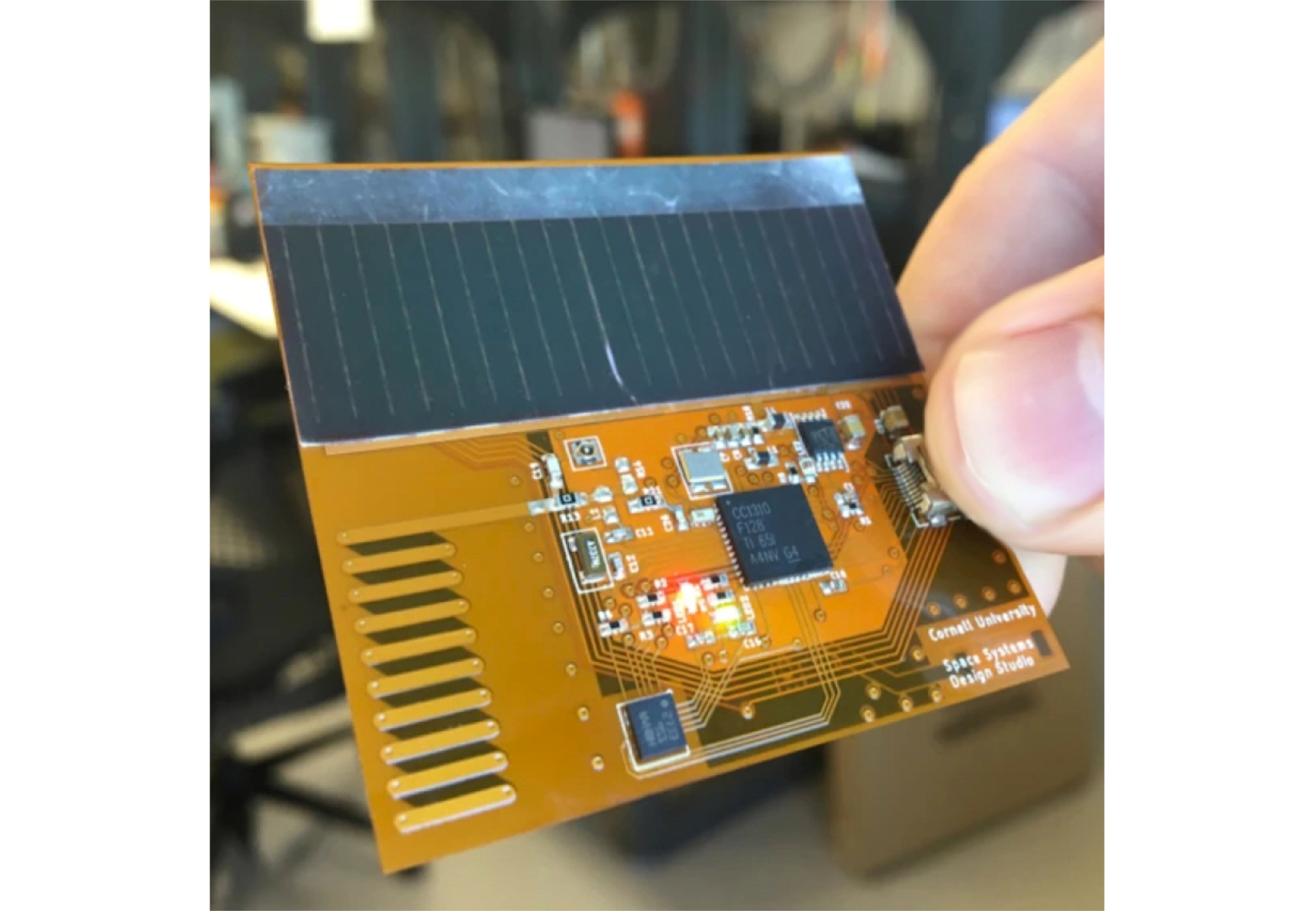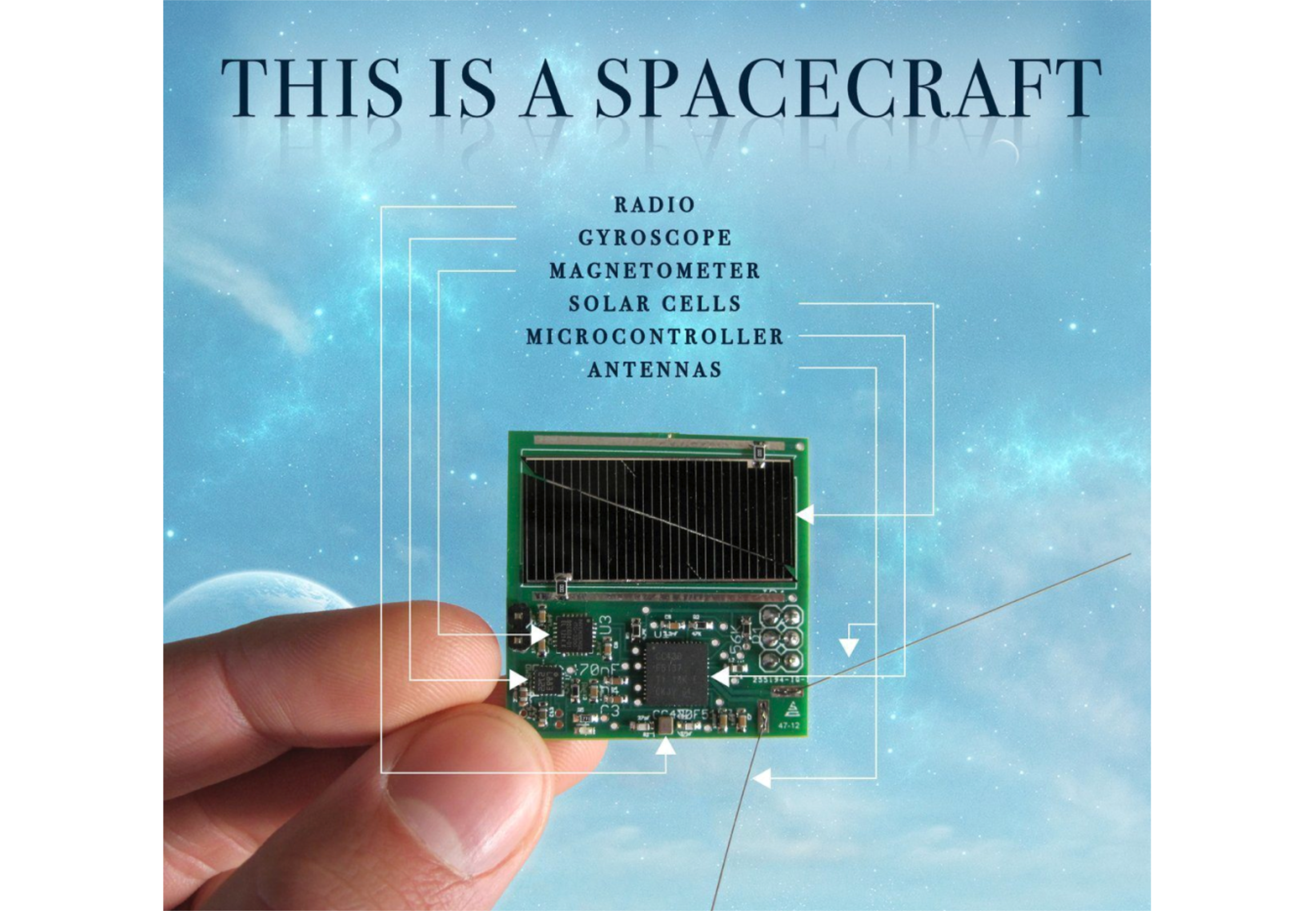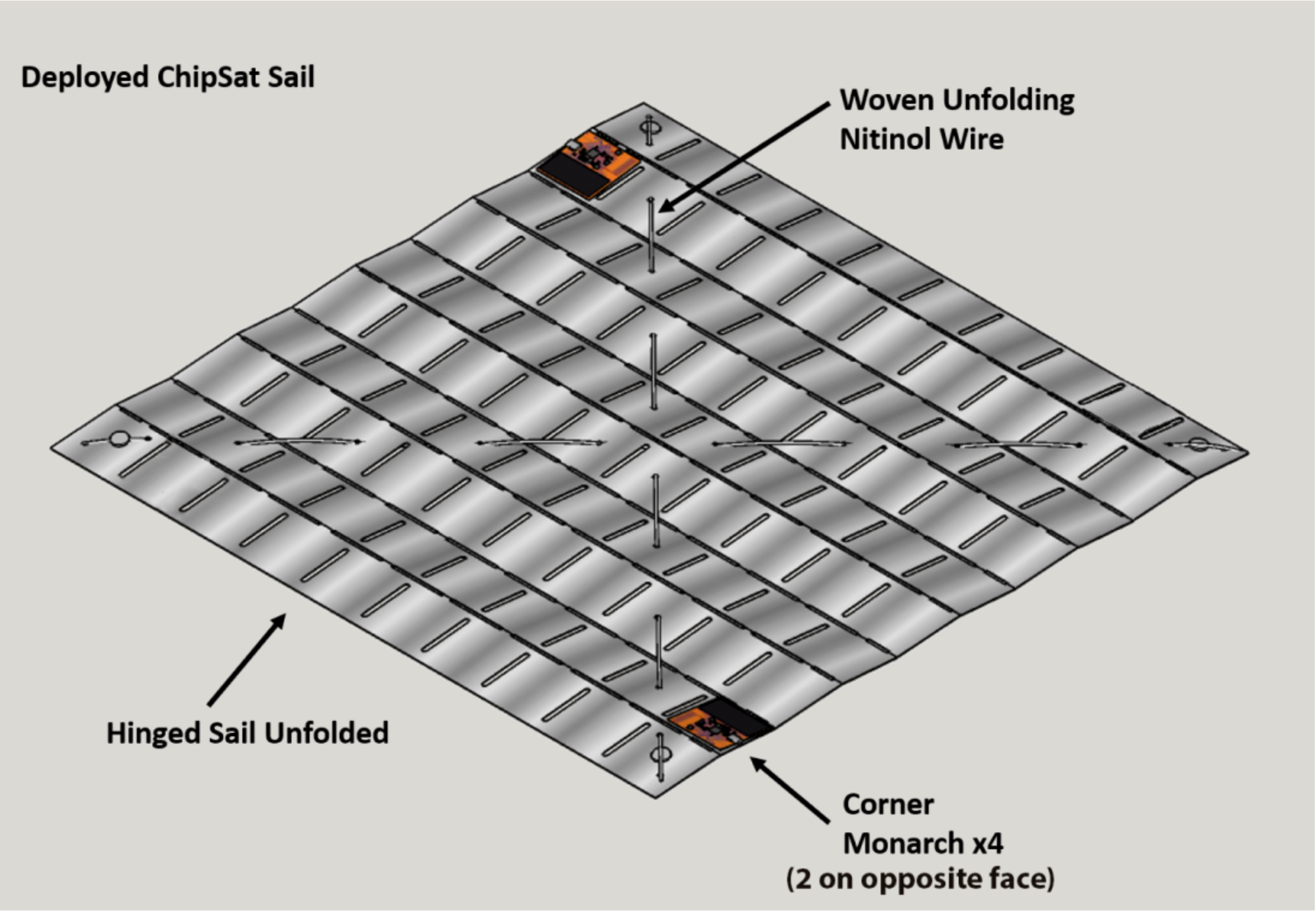ChipSats
“ChipSats” are palm-sized computers—and the world's smallest spacecraft when they fly solo! In Alpha's case, we're attaching the ChipSats to our light sail, where they'll function as flight computers.
ChipSats contain all the radio communications, sensors, and power systems the sail needs. This allows Alpha's sail to disconnect from the CubeSat that deployed it, making it the world's first free-flying light sail!
Why is this important? We need extremely lightweight sails if we ever hope to reach Alpha Centauri at 20% the speed of light. Lightweight sails call for lightweight computers!







